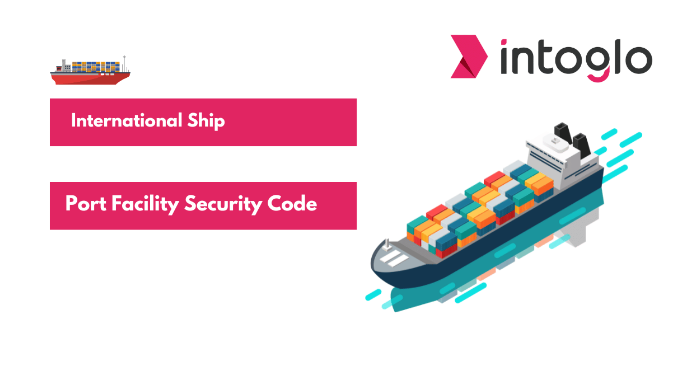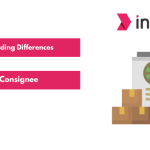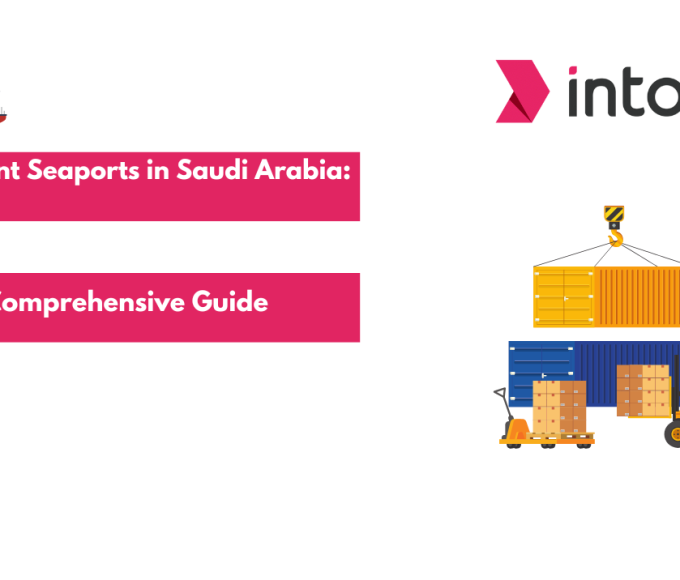The international shipping industry is the backbone of global trade. It facilitates the movement of 90% of the world’s goods, ensuring essential supplies reach consumers across continents. However, this vital network also presents a potential vulnerability – the risk of security threats.
Enter the International Ship and Port Facility Security (ISPS) Code, a critical set of regulations to safeguard maritime security. Implemented in 2004, the ISPS Code is pivotal in ensuring the safety and security of ships, port facilities, cargo, and crew. Let’s delve deeper into this essential framework and understand its significance in today’s world.
The Importance of the ISPS Code
Delays, disruptions, and potential criminal activity could wreak havoc on international trade. The ISPS Code acts as a preemptive measure, establishing a standardized approach to maritime security. It fosters cooperation between governments, port authorities, shipping companies, and crew members, creating a united front against potential threats.
Here’s a closer look at the key reasons why the ISPS Code is so important:
- Standardized Security Measures: The code establishes uniform security protocols for ships and port facilities worldwide. This consistency eliminates confusion and fosters international cooperation in securing maritime transportation.
- Improved Communication: Clear communication channels are mandated between ships, port authorities, and relevant authorities. This facilitates the timely exchange of security information and allows for a more coordinated response to potential threats.
- Heightened Awareness: The code has raised awareness of maritime security threats among all industry stakeholders. This heightened vigilance is crucial in deterring criminal activity and preventing security incidents.
- Risk Assessment and Mitigation: The requirement for conducting security assessments empowers stakeholders to identify vulnerabilities and implement targeted measures to address them. This proactive approach helps prevent security breaches before they occur.
- Enhanced Emergency Response: The ISPS Code mandates the development of emergency response plans for ships and ports. This ensures a more coordinated and effective response to accidents, fires, or other security incidents.
The Purpose of the ISPS Code
The ISPS Code has a two-pronged approach:
- Prevention: The code aims to deter and prevent security incidents by establishing clear security protocols. This includes measures like conducting security assessments, developing security plans, and implementing access control procedures at ports and on ships.
- Detection: The code also outlines processes for identifying and responding to potential security threats. This involves training personnel to recognize suspicious activity, maintaining effective communication channels, and having emergency contingency plans.
By adopting these comprehensive measures, the ISPS Code creates a more secure environment for maritime trade. This, in turn, translates to smoother logistics, reduced disruptions, and, ultimately, a more robust global economy.
In the next section, we’ll explore the specific requirements and responsibilities outlined in the ISPS Code for various stakeholders involved in maritime operations.
Origin and Evolution of IPSC Code
The robust security framework of the ISPS Code wasn’t born in a vacuum. Its development was a direct response to evolving security threats and a growing recognition of the vulnerability of maritime infrastructure.
Let’s rewind the clock and explore the key historical milestones that led to its creation:
- The Dawn of a New Era: The tragic events of September 11th, 2001, served as a stark wake-up call. It highlighted the potential for using maritime vessels for malicious purposes. This realization spurred the international community to prioritize maritime security.
- The International Maritime Organization Takes Charge: The International Maritime Organization (IMO), the UN agency responsible for maritime safety and security, played a pivotal role. In November 2001, the IMO Assembly unanimously agreed to develop new security measures for ships and port facilities.
- Fast-Track Development: Recognizing the urgency, the development of the ISPS Code was expedited. This included a series of regional awareness seminars conducted by the IMO throughout 2002 to keep stakeholders informed and engaged.
- A Diplomatic Conference and Global Adoption: In December 2002, a Diplomatic Conference on Maritime Security convened. This critical gathering culminated in the adoption of the ISPS Code. With the backing of the IMO’s Maritime Safety Committee and final approval from the International Labour Organization (ILO), global implementation was set.
- Entry into Force: On July 1st, 2004, the ISPS Code officially came into effect. This marked a significant step forward for international maritime security, establishing a standardized set of regulations for all contracting governments.
The swift response and collaboration demonstrated by the international community in developing the ISPS Code are truly commendable. It is a testament to the global commitment to maintaining a secure and efficient maritime transportation system.
In the next section, we’ll get into the crucial components of the ISPS Code.
Essential Components of the ISPS Code
The ISPS Code is based on clearly defined requirements and designated roles. Let’s dissect the key components that ensure a comprehensive approach to maritime security:
Ship Security Requirements
- Ship Security Assessment (SSA): This crucial first step involves conducting a thorough risk assessment to identify potential vulnerabilities specific to a particular ship and its operating environment. Based on the findings, a tailored Ship Security Plan (SSP) is developed.
- Ship Security Plan (SSP): This comprehensive document acts as the ship’s security bible, outlining specific measures to address identified threats. It encompasses procedures for access control, cargo security, communication protocols, and emergency response plans.
- International Ship Security Certificate (ISSC): Following a successful security assessment and implementation of the SSP, a ship is issued an ISSC. This certificate verifies compliance with the ISPS Code and is mandatory for international voyages.
- Ship Security Officer (SSO): Every ship operating under the ISPS Code must designate a qualified Ship Security Officer (SSO). The SSO assumes a critical role in implementing the SSP, overseeing security drills and training, and liaising with port authorities on security matters.
Port Facility Security Requirements
- Port Facility Security Assessment (PFSA): Similar to the SSA for ships, port facilities must conduct a Port Facility Security Assessment (PFSA) to identify potential security risks within their perimeters.
- Port Facility Security Plan (PFSP): Based on the PFSA, a comprehensive Port Facility Security Plan (PFSP) is developed. This plan outlines security measures specific to the port facility, including access control procedures, cargo security protocols, and emergency response plans.
- International Ship and Port Facility Security (ISPS) Code Designated Authority (DA): Each contracting government must designate a national authority responsible for overseeing the implementation of the ISPS Code. The DA works closely with port authorities to ensure compliance.
- Port Facility Security Officer (PFSO): As ships have SSOs, port facilities must appoint a Port Facility Security Officer (PFSO). The PFSO is responsible for implementing the PFSP, coordinating security activities within the port, and liaising with shipboard SSOs.
Roles and Responsibilities: Working Together for Security
The effective implementation of the ISPS Code hinges on clear roles and responsibilities for all stakeholders. Here’s a breakdown of the key players:
- Ship Owners and Operators: They have the ultimate responsibility for ensuring their ships comply with the ISPS Code requirements, including developing and implementing SSPs, appointing qualified SSOs, and maintaining the ISSC.
- Ship Crews: Crew members play a vital role in upholding security measures on board. They receive regular training on security procedures and are expected to report any suspicious activity.
- Port Authorities: They are responsible for implementing the ISPS Code within their facilities, including conducting PFSAs, developing PFSPs, appointing PFSOs, and coordinating security measures with ships calling their ports.
The ISPS Code fosters a multi-layered approach to maritime security by establishing a collaboration framework and assigning clear responsibilities. In the next section, we’ll explore how IPSC code is implemented.
Implementing and Enforcing the ISPS Code
The ISPS Code is a robust framework, but its effectiveness hinges on proper implementation and ongoing compliance. Let’s navigate the steps involved and explore the measures taken to ensure adherence:
Steps for Implementation: A Collaborative Effort
1. National Implementation: Contracting governments play a critical role by designating an ISPS Code Designated Authority (DA) to oversee implementation within their territories.
2. Port Facility Security Assessments (PFSAs): Port authorities conduct thorough PFSAs to identify security vulnerabilities within their facilities.
3. Port Facility Security Plans (PFSPs): Based on the PFSA findings, comprehensive PFSPs are developed, outlining security measures specific to each port.
4. Ship Security Assessments (SSAs): Similar to port facilities, shipping companies conduct SSAs for their vessels to identify potential security risks.
5. Ship Security Plans (SSPs): Tailored SSPs are developed for each ship, outlining security protocols based on the identified threats.
6. Training and Drills: Crew members and port personnel undergo regular training on security procedures and emergency response protocols. Security drills are also conducted to test preparedness.
7. Certification and Verification: Once SSPs and PFSPs are implemented, ships can obtain International Ship Security Certificates (ISSC), and ports can demonstrate compliance with the code
Looking for a door-to-door FCL shipment company? Contact Intoglo!
Compliance Measures and Enforcement:
The ISPS Code is not a static document. Contracting governments enforce their provisions through inspections, audits, and verification measures. These may include:
- Port State Control (PSC) Inspections: Port authorities of contracting governments can inspect foreign ships calling at their ports to verify compliance with the ISPS Code.
- Flag State Control: The government of a ship’s registration (flag state) ensures compliance with the code.
Maintaining Compliance:
The ISPS Code is a living document that undergoes periodic review and amendments to address new security threats and technological advancements. Contracting governments, port authorities, and shipping companies are crucial in staying updated and adapting their security measures accordingly.
The Certification Process:
The issuance of International Ship Security Certificates (ISSC) signifies a ship’s compliance with the ISPS Code. The process typically involves independently verifying the ship’s security plan and implementation.
In the concluding section, we’ll discuss the challenges and considerations for the ISPS Code and its significance for the future of maritime security.
Challenges and Considerations for the ISPS Code
The ISPS Code, while undeniably successful, has its challenges. Here’s a look at some of the ongoing challenges and areas for improvement:
Operational and Financial Challenges:
- Resource Constraints: Implementing and maintaining robust security measures can be resource-intensive, particularly for developing countries.
- Administrative Burden: The code can significantly burden both port authorities and shipping companies, requiring them to navigate complex regulations and maintain extensive documentation.
- Disparate Implementation: Consistent enforcement across all contracting governments remains a challenge. This can create a situation where security measures vary from port to port.
Criticisms and Areas for Improvement:
- Evolving Threats: The ISPS Code is constantly playing catch-up with the ever-changing nature of maritime security threats—new technologies like cyberattacks and drone use present fresh challenges.
- Focus on Physical Security: While physical security measures are crucial, the code may not adequately address emerging threats like cyberattacks that target critical infrastructure.
- Focus on Ship-Port Interface: The code’s primary focus is on the interface between ships and ports. However, vulnerabilities may also exist outside this immediate zone, such as in the broader supply chain.
The Future of Maritime Security
Despite these challenges, the ISPS Code remains a cornerstone of global maritime security. Moving forward, continuous adaptation and collaboration will be key. Here are some potential areas for improvement:
- Regular Review and Updates: The code should undergo periodic reviews to address evolving threats and incorporate technological advancements.
- Resource Sharing and Capacity Building: Developed nations can provide resources and training to assist developing countries in effectively implementing the ISPS Code.
- Focus on Cyber Security: The code needs to encompass measures to address cyber threats and protect critical maritime infrastructure.
- Expanding the Scope: A more holistic approach may require considering security vulnerabilities beyond the immediate ship-port interface.
The ISPS Code is a testament to the international community’s commitment to a secure maritime environment. By acknowledging the challenges and fostering ongoing improvement, stakeholders can ensure that this vital framework continues to safeguard the global arteries of trade.
Conclusion
In the ever-evolving landscape of international shipping, ensuring the safety and security of your cargo is paramount.
Intoglo offers a seamless solution with our door-to-door FCL shipping services from India to the USA. By eliminating third-party interference, we provide cost-effective, robust security and reliable shipping services supported by 24/7 delivery. Let Intoglo handle the complexities of international shipping so you can focus on growing your business.Contact us today to experience the Intoglo difference and ensure your shipments reach their destination safely and efficiently.









Leave a comment